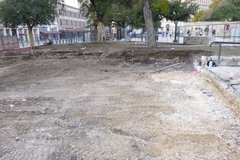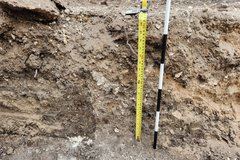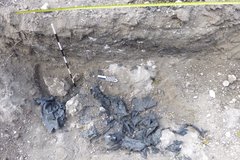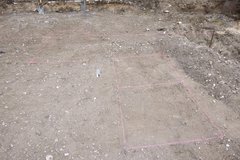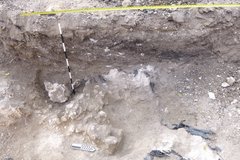Week 2 started with the completion of the soil removal from the project area. The project area is now approximately level with Alamo Street (Figure 1). There were no cultural materials encountered in the modern soils removed this week.
After the project area was at the desired level, archaeologists began the process of locating the 1975 trench which was excavated by UTSA. The location of this trench was significant because within the trench the 1975 UTSA archaeologists encountered a feature that they believed was a remnant of the wall footing of the south mission complex. Using maps generated from the 1975 investigation and archival maps georeferenced on a modern aerial map of Alamo Plaza, the general location of the trench was known. With the assistance of a backhoe, Alamo Trust, Inc. and Raba Kistner archaeologists excavated a small east-west trench to bisect the previously dug trench. The 1975 trench was identified by noting the soil changes (Figure 2).

